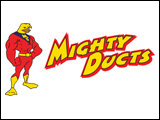Elon Musk, of Tesla, has just offered $100 million to support the development of a technological solution that will reduce atmospheric CO2. By so doing he is acknowledging and addressing the climate crisis. This must be unsettling news for climate change deniers.
But let’s stick to the issue. Technology has the created the climate crisis by intensifying the issues – technology has taken us from extraction to pollution.
CO2 draw-down is a natural process. It has been occurring naturally for 3.8 billion years. Through photosynthesis all living vegetation (trees, grasses, legumes, etc.) is continually drawing down CO2 . Photosynthesis is the process by which light energy from the sun plus water absorbs atmospheric CO2 through the leaf surface – the plant transforms the CO2 into simple sugars which the plant uses for its growth. In natural systems this draw-down is carried further as up to 40% of these simple sugars are fed to symbiotic soil biota through the plant root system in exchange for hard to reach nutrients, water, and disease protection. At the same time oxygen is released in the atmosphere. Some of the excess carbon is sequestered in the deeper soil profile by the biology (for example mycorrhizal fungi). These soil biota form aggregate and humus, effectively increasing Soil Organic Matter. The aggregate is that space between mineral particles that allows more water and oxygen storage capacity and housing for beneficial biology and glues (glomalin). Nutrients adhere to these glues and are solubilized so they are available for plant nutrition and health.
In the last twenty years or so a new way of doing agriculture has appeared called Regenerative Agriculture (RegenAG). It has rapidly increase in popularity. RegenAG advocates soil building practises such as limited soil disturbance, maintaining ground cover, maintaining crop diversity, and other practices to encourage living roots throughout the growing season. The integration of livestock into the farming system is am important part of RegenAG. These practices not only increase soil carbon sequestration(CS) but also the bottom line.
According to the International Panel on Climate Change (IPCC) Assessment Report on Agriculture (2007) 1) “… 89% of the technical mitigation potential within the agricultural sector is related to soil carbon sequestration…” 1. RegenAg farm practices can meet that potential and possibly even exceed it. If we compare CS to other potentials, for example the better placement of nitrogen and phosphorus fertilizer, fertilizer placement can account for only 2%. 2. Dr Rattan Lal , soil scientist from Ohio State University and member of the IPCC Agricultural committee) says “…that 3 billion tons of carbon can be sequestered annually…” on agricultural acres worldwide. 3. Others believe much more can be sequestered.
Carbon Sequestration should not to be confused with Carbon Capture and Storage (CCS). CCS is a costly technology($700-800/tonne CO2). Its potential is highly overstated. It is a technology that has nothing to do with agriculture.
CO2 draw-down is already occurring on RegenAG farms. Small, medium and large size farms anywhere in the world can adopt the RegenAG practices and obtain substantial soil carbon sequestration. RegenAG provides more ecological services; better water holding capacity and better water filtration, exponential increase in diversity and numbers of beneficial biology, soil aggregation hence stability, and increased nutrient availability. It also mitigates the effect of another GHG, water vapour, by reestablishing a natural water cycle.
No costly technology can match RegenAG in drawing down CO2 from the atmosphere to sequestered carbon in the soil. In the atmosphere it is damaging. In the soil it has many benefits. Elon Musk should be encouraged to share his riches democratically with all farmers practising RegenAg or transitioning to RegenAg methods of agriculture. The health of our planet, of all life on this blue planet, depends on it. This is human reconciliation with our environment!



